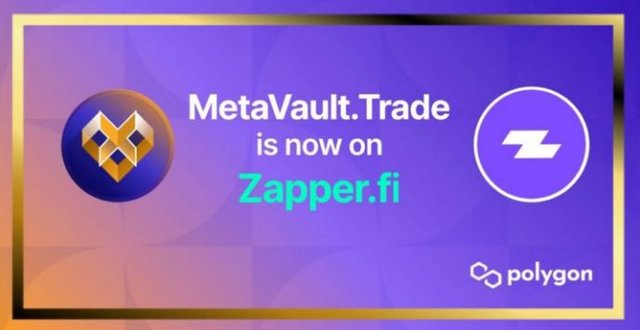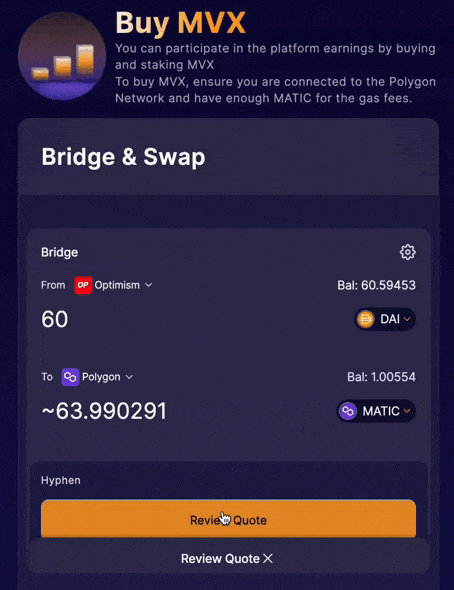REVIEW Metavault.Trade — The Next Generation DEX

Metavault.Trade is a new kind of Decentralised Exchange designed to provide a large range of trading features and very deep liquidity on many large cap crypto assets.
Traders can use it in two ways:
Spot trading, with swaps and limit orders.
Perpetual futures trading with up to 30x leverage on short and long positions.
Metavault.Trade aims to become the go-to solution for traders who want to stay in control of their funds at all times without sharing their personal data. Its innovative design gives it many advantages over other existing DEXes.
Very low transaction fees.
No price impact, even for large order sizes.
Protection against liquidation events: the sudden changes in price that can
often occur in one exchange (“scam wicks”) are smoothed out by the
pricing mechanism design.
All-in-one platform: spot and leverage trading.
A multi-asset pool — the solution for trading without price impact
The main innovation at the heart of Metavault.Trade is the multi-asset pool. This feature allows the platform to have shared liquidity across all the assets it supports. Here’s how it works.
For every x amount of assets deposited in the pool, an equivalent dollar amount of index tokens, named MLVP, are minted. A liquidity provider can withdraw at any time by burning MVLP in exchange for any asset in the pool. This is why Metavault.Trade can be used to swap large volumes without price impact.
For example, imagine a situation where the pool is made up of five assets (BTC, ETH, MATIC, USDC and DAI) in equal proportions in terms of dollar value: 20% of each. If a trader wants to buy 50% of the BTC supply with USDC, they can do so instantly, at the exact price shown on the platform, without any price impact. The only thing that is altered after the order goes through is the state of the pool which becomes BTC: 10%, USDC: 30% and the rest remains unchanged. The price of BTC offered on the platform is the same before and after the swap, even though half the available supply has been bought up!
With each swap, the pool becomes more or less unbalanced in comparison to its initial state. In order to rebalance the pool, liquidity providers will be incentivised to deposit in-demand assets and disincentivised to deposit those of which there is an excess.
For most traders, the platform will seem as if it has infinite liquidity at a fixed price, completely removing the need for an order book.
Blockchain technology and oracle pricing
Metavault.Trade launched on Polygon and will expand to more chains in the future.

The assets supported at launch on Polygon are six large caps and three stablecoins:
BTC, ETH, MATIC, LINK, UNI, AAVE
USDC, DAI, USDT
Choosing Polygon over other chains has many advantages:
Polygon transactions are fast and cheap.
It’s easy to onboard users thanks to on-ramp / off-ramp from exchanges.
Chainlink provides a large number of price feeds on Polygon. These are crucial for the platform’s pricing mechanism, and the listing of new assets also depends on them.
To set the price of each asset, the platform aggregates Chainlink and Time-Weighted Average Price (TWAP) pricing from major DEXes and CEXes.
This pricing mechanism benefits leverage traders in a huge way because it reduces the risk of liquidation from the temporary wicks you find on some exchanges. These scam wicks often come from whales manipulating the order books to liquidate other traders.
MVLP — Liquidity Providing incentivisation
As of Q1 2022, trillions of dollars are traded monthly on crypto markets. DEXes offering perpetual trading account for about $100 billion of this total — with this number growing regularly. Metavault.Trade is well positioned to grab a share of this market, in which its direct competitors make anywhere between $5 million and $60 million in fees every month.
To run smoothly, Metavault.Trade needs a multi-asset pool with a lot of liquidity. To ensure this is the case, the platform has a very generous incentive programme: 70% of the platform fees are redistributed to the liquidity providers who minted MVLP by pooling their crypto assets.
One can consider MVLP as a “crypto majors index”, further stabilised by stablecoins. The incentive programme makes it worthwhile for liquidity providers to transfer from traditional similar pools (like the aTriCrypto Curve pool) to MVLP.
Furthermore, MVLP acts as a counterweight to the leverage traders on the platform, with their losses flowing back into MVLP. Data shows that, on average, traders lose money more occasionally than they win: as the saying goes, “the house always wins”. In this case, that’s MVLP.
MVX — Governance and utility token
Metavault.Trade has its own governance and utility token: MVX. Holders are incentivised to stay in for the long run, with many rewards that will quickly accumulate.
30% of platform fees
MVX stakers will get 30% of the fees collected by the platform in the form of the network’s native token — MATIC on Polygon.
Escrowed MVX
MVX stakers will also be rewarded in “escrowed MVX” (esMVX), a non-transferrable token that can be used in two ways:
esMVX can be staked. It will then earn the same rewards as staked MVX: MATIC rewards from platform fees, more esMVX, and multiplier points. This is probably the most interesting option as it compounds rewards and generates higher APR and earnings.
esMVX can also be unstaked and vested to be converted and distributed as MVX. Vesting esMVX then unlocks linearly over one year with MVX being distributed with each unlocking.
However, the vested esMVX does not earn the staking rewards.
Vesting your esMVX also requires you to lock the average MVX/MVLP with which you earned your esMVX in a vault. The MVX/MVLP in this vault cannot be sold, but does still accrue rewards. The locked MVX/MVLP in the vault can always be withdrawn, but this will prevent any further vesting of esMVX.

Multiplier Points
Staked MVX receives Multiplier Points (MPs) that allow the holder to accrue protocol fee rewards: each multiplier point earns the same amount of MATIC as a MVX token.
The longer you leave MVX staked, the more MPs you accrue.
But unstaking MVX or esMVX will mean you burn the same amount of multiplier points. For example, if you unstake 50% of your MVX, you will lose 50% of your MPs. Restaking MVX will start accruing MPs from 0.
Metavault.Trade is built by the team behind Metavault DAO which fuels a whole ecosystem of blockchain and technology projects.
The code is a friendly fork of GMX, which has already been audited by ABDK Consulting [Find the audit here under the name “Gambit”, the original name of the GMX project].
As security is of utmost importance, an independent audit will take place in the near future.
After carefully considering GMX’s tokenomics, the Metavault DAO team chose to redesign them completely for Metavault.Trade. The main differences are the following:
Compared to GMX, Metavault.Trade allocates a larger proportion of the tokens to reward farming. That makes its incentivisation program far more substantial.
The MVX token was launched in a fair way, with no private or seed rounds.
Metavault DAO intends to be a liquidity provider in Metavault.Trade, which will make it robust and independent.
There is already a strong community backing Metavault.Trade, such as those following it through Telegram and Discord channels. Sharing of 100% of the platform fees among MVX and MVLP holders/stakers — alongside a carefully designed incentivisation structure — means the project will attract and retain long term supporters.
Metavault.Trade Integrates Socket Infrastructure for a Seamless Bridging Journey: Tutorial
The Metavault.Trade bridge opens the floodgates for liquidity to seamlessly flow and users to easily onboard into Metavault.Trade on Polygon from 7+ chains!
Here is a quick guide for you to understand all the features of the bridge & get you started for the first jump! The Metavault.Trade bridge opens the floodgates for liquidity to seamlessly flow and users to easily onboard into Metavault.Trade on Polygon from 7+ chains!
1, Begin your Bridging journey
The bridge is directly accessible by clicking the ‘Buy’ tab on the navigation bar and navigating to ‘Buy MVX on Polygon’ option. Alternatively use the link here
2, Select from & to chain
From chain is the chain you’re sending tokens from & to chain is the chain you want to receive your tokens on.
For example, to buy MVX blazingly fast on Polygon you will choose from chain as Optimism & destination chain as Polygon.
3) Select sending token and receiving token
Once you’ve selected the from and to chains, select the token you want to bridge. Use the drop-down menu to pick from the available tokens & choose the desired amount you want to bridge!
Metavault.Trade’s bridge also lets you bridge & swap into any token on destination!
eg: You can go from $DAI on Optimism to $MATIC on Polygon in one bridging txn.
4) Select a route for bridging
Click on the settings icon on the top-right corner and choose the best route based on your desired preference!
High Return — Highest return on the destination chain
Low Gas Fee — Lowest gas fee for bridging
Fastest — Route with least bridging time
5) Bridging

Once you have selected & input the token amounts, click on ‘Review Quote’ to validate your bridge transaction before proceeding. Once ready click on ‘Bridge’ to begin the bridging!
You can see a status of the ongoing transaction by clicking the ‘Pending’ window.
Social Links
Website: https://metavault.trade/
Twitter: https://twitter.com/MetavaultTRADE
Telegram: https://t.me/MetavaultTrade
Discord: https://discord.gg/metavault
Medium: https://medium.com/@metavault.trade
Bitcointalk : hoaroicuaphathd